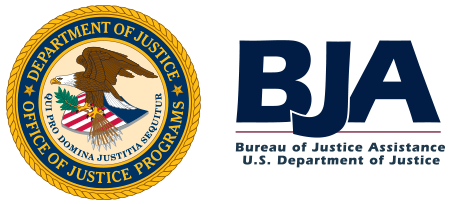Utah Justice Reinvestment Initiative

In 2015, Utah’s Governor Herbert signed HB 348, enacting a comprehensive set of justice system reforms as part of its Justice Reinvestment Initiative (JRI) into law. With support from the Crime and Justice Institute (CJI) and The Pew Charitable Trust’s Public Safety Performance Project, and with funding from Pew and the Bureau of Justice Assistance, a component of the Department of Justice’s Office of Justice Programs, the Utah Commission on Criminal and Juvenile Justice studied the state’s criminal justice system and made policy recommendations for improvement in 2014. The Commission’s analysis found that Utah’s prison population had grown 18 percent—six times faster than the national average—from 2004 to 2013, despite a decrease in the crime rate during that period.1 In addition, the state’s prison population was projected to grow by another 37 percent in the following 20 years at a cost of more than $500 million, and its prisons were increasingly used for those who had committed nonviolent offenses.2, 3
Utah has taken major steps to reduce its growing prison population. These efforts have resulted in a 20 percent decrease in the overall prison population since 2014 and an increase in the proportion of the prison population composed of people convicted of violent offenses.4, 5
Utah’s JRI goals included:
1. Focus prison use on those convicted of serious and violent offenses.
2. Strengthen probation and parole supervision.
3. Support local corrections systems.
To date, Utah has achieved the following:6
- Reduction in the prison population7
- Decreased use of prison space for people convicted of nonviolent crimes8
- Increased use of evidence-based practices in probation and parole9
- Decreased time people spend in jail for probation violations10
1. Focus prison use on people convicted of serious and violent offenses.
Prior to JRI, Utah was sending increasing numbers of people to prison for drug-related offenses and other nonviolent crimes.11 Prison sentences were also increasing for lower-level and nonviolent offenses.12 In 2013, more people were sent to prison for simple possession of drugs than any other criminal offense, which had a significant impact on the state’s prison population.13, 14 Utah responded by modifying penalties for certain lower level offenses and modifying sentencing guidelines to reduce sentence lengths for offenses in lower-level crime categories.15


2. Strengthen probation and parole supervision.
In 2014, the Commission found high rates of revocation for people on probation and parole.23 HB 348 required Utah to adopt evidence-based practices to increase successful completions of probation and parole and to decrease incarceration due to revocations or violations.24
Revocations:
occur when an individual is noncompliant with the conditions of their community supervision and as a result are incarcerated.

3. Support local corrections systems.
Prior to 2015, local jails were housing a significant number of people who violated probation and were awaiting court hearings. Jails were also housing large numbers of people convicted of traffic offenses.32 Because of these factors, a primary goal was to ensure changes to the state prison system and community supervision would not place additional burden on local jails.33



Additional Accomplishments Related to Reforms
- JRI funding for criminal justice treatment programs was almost $5 million in 2015. The state added an additional $6 million between 2017 and 2019. That $6 million in general revenue was eliminated from the FY2020 budget and was replaced by Medicaid expansion funds.45 Despite ongoing funding, field surveys showed that availability of behavioral health treatment options continued to be a challenge.46
- One of the stated goals of the Utah Commission on Criminal and Juvenile Justice was to ensure oversight and accountability of the JRI legislation.47 HB 348 required continued data collection and reporting on programs addressing recidivism to assess the impact of the changes.48 The Utah Commission on Criminal and Juvenile Justice continues to produce annual reports on the impact of the JRI legislation.49
- In 2019, the Office of the Legislative General commenced an audit of the impact of JRI on Utah’s jails and criminal justice system.50 The audit report was released in 2020 and concluded the state had not fully implemented the provisions of HB 348.51 The Utah Department of Corrections took steps to respond to the audit’s findings, including implementing further evidence-based supervision practices in 2022.52
Endnotes
- The Crime and Justice Institute, Justice Reinvestment: Utah Strengthening Public Safety While Curbing Corrections Growth (Boston, MA : 2017), 1, https://www.crj.org/assets/2017/07/10_Utah_JRI.pdf.
- Ibid.
- Ibid.
- Utah Commission on Criminal and Juvenile Justice, Justice Reinvestment Initiative (JRI) Update Annual Report to the Legislature—November 2021 (Salt Lake City, UT : 2021), A2, https://justice.utah.gov/wp-content/uploads/JRI-2021-Annual-.pdf.
- Ibid. at A8.
- The impact of the COVID pandemic needs to be considered. In its 2021 Annual Report, Utah’s Commission on Crime and Juvenile Justice cautioned against comparing data from 2021 to that of prior years. See, https://justice.utah.gov/wp-content/uploads/JRI-2021-Annual-.pdf.
- Utah Commission on Criminal and Juvenile Justice, Justice Reinvestment Initiative (JRI) Update Annual Report to the Legislature—November 2021, A2.
- Ibid. at A8.
- “Recommendation Status,” Utah State Legislature, accessed December 2023, https://lag.utleg.gov/recommendations.jsp.
- Utah Commission on Criminal and Juvenile Justice, Justice Reinvestment Initiative (JRI) Update Annual Report to the Legislature—November 2021, E6.
- Utah Commission on Criminal and Juvenile Justice, Justice Reinvestment Report, (Salt Lake City, UT : 2014), 7, https://justice.utah.gov/wp-content/uploads/Justice-Reinvestment-Report-2014.pdf.
- Ibid. at 8.
- Ibid. at 7.
- Ibid. at 3.
- Ibid. at 16.
- Ibid. at 8.
- Ibid. at 16.
- Ibid. at 8.
- Utah Commission on Criminal and Juvenile Justice, Justice Reinvestment Initiative (JRI) Update Annual Report to the Legislature—November 2021, A2.
- Utah House Bill 0348, § 58-37-8 (2015).
- Utah Commission on Criminal and Juvenile Justice, Justice Reinvestment Initiative (JRI) Update Annual Report to the Legislature—November 2021, A.
- Ibid. at C6.
- Utah Commission on Criminal and Juvenile Justice, Justice Reinvestment Report, 9.
- Utah House Bill 0348, § 62A-15-103 (2015).
- Utah Commission on Criminal and Juvenile Justice, Justice Reinvestment Report, 12.
- Utah House Bill 0348, § 63M-7-404 (2015).
- Ibid.
- Utah Commission on Criminal and Juvenile Justice, Justice Reinvestment Initiative (JRI) Update Annual Report to the Legislature—November 2021, B14.
- Ibid. at B13.
- Ibid. at B14.
- Ibid. at B13.
- Utah Commission on Criminal and Juvenile Justice, Justice Reinvestment Report, 21.
- Utah Commission on Criminal and Juvenile Justice, Justice Reinvestment Initiative (JRI) Update Annual Report to the Legislature—November 2021, 5.
- Utah Commission on Criminal and Juvenile Justice, Justice Reinvestment Initiative (JRI) Update Annual Report to the Legislature—November 2021, 9.
- Utah House Bill 0348, § 63M-7-404 (2015).
- Utah Commission on Criminal and Juvenile Justice, Justice Reinvestment Initiative (JRI) Update Annual Report to the Legislature—November 2021, E6.
- Utah House Bill 0348, § 58-37-8 (2015).
- Utah Commission on Criminal and Juvenile Justice, Justice Reinvestment Report, 14.
- Ibid. at 22.
- Ibid. at 42.
- Utah House Bill 0348, § 41-1a-400 (2015).
- Utah Commission on Criminal and Juvenile Justice, Justice Reinvestment Initiative (JRI) Update Annual Report to the Legislature—November 2021, E9.
- Ibid.
- Ibid.
- Office of the Legislative Auditor General State of Utah, A Performance Audit of the Justice Reinvestment Initiative (Salt Lake City, UT : 2020), 53, https://le.utah.gov/interim/2020/pdf/00003914.pdf.
- Ibid. at 51.
- Utah Commission on Criminal and Juvenile Justice, Justice Reinvestment Report, 14.
- Utah House Bill 0348, § 64-13-25 (2015).
- Utah Commission on Criminal and Juvenile Justice, Justice Reinvestment Initiative (JRI) Update Annual Report to the Legislature—November 2021, 2.
- Office of the Legislative Auditor General State of Utah, A Performance Audit of the Justice Reinvestment Initiative (Salt Lake City, UT : 2020), 13.
- Ibid. at 5.
- “Recommendation Status,” Utah State Legislature, accessed December 2023, https://lag.utleg.gov/recommendations.jsp.

BJA strengthens the Nation’s criminal justice system and helps America’s state, local, and tribal jurisdictions reduce and prevent crime, reduce recidivism, and promote a fair and safe criminal justice system. BJA focuses its programmatic and policy efforts on providing a wide range of resources, including training and technical assistance, to law enforcement, courts, corrections, treatment, reentry, justice information sharing, and community-based partners to address chronic and emerging criminal justice challenges nationwide. To learn more about BJA, visit https://bja.ojp.gov, or follow us on Facebook (https://www.facebook.com/DOJBJA/) and Twitter (@DOJBJA). BJA is part of the Department of Justice’s Office of Justice Programs.

The Crime and Justice Institute (CJI) has more than a decade of experience as a JRI technical assistance provider, supporting states through assessing strengths and needs, conducting data analysis, facilitating policy development, and assisting with implementation.
Acknowledgments
This brief was prepared by Len Engel, Barbara Pierce, Dr. Katie Zafft, Abigail Strait, Maureen Flanagan, Andy Tisdel, Clarissa Dias, Nikki Miguel, and Ashley Neufeld.
This project was supported by Grant No. 15PBJA-21- GK-04350-JRIX awarded by the Bureau of Justice Assistance. The Bureau of Justice Assistance is a component of the Department of Justice’s Office of Justice Programs, which also includes the Bureau of Justice Statistics, the National Institute of Justice, the Office of Juvenile Justice and Delinquency Prevention, the Office for Victims of Crime, and the SMART Office. Points of view or opinions in this document are those of the author and do not necessarily represent the official position or policies of the U.S. Department of Justice.
Project Contact:
Barbara Pierce, Director of Justice Initiatives | CJI, comms@cjinstitute.org
